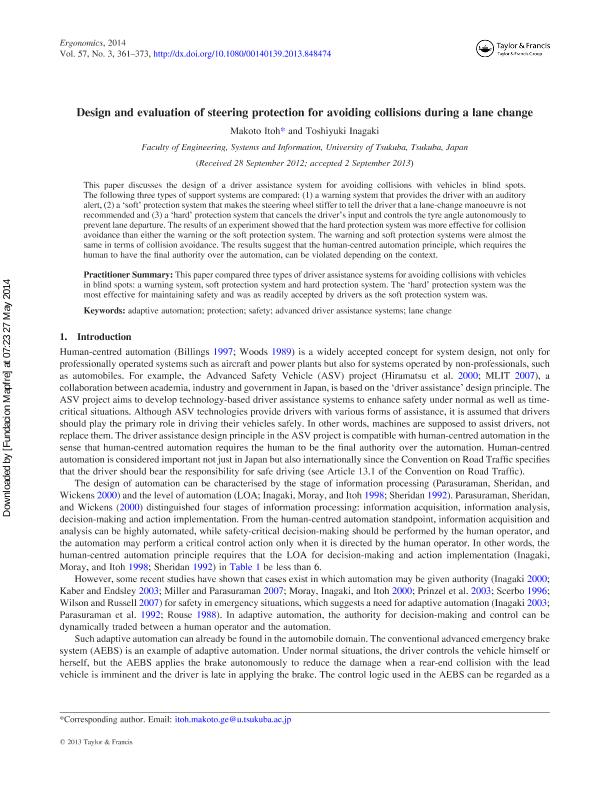Design and evaluation of steering protection for avoiding collisions during a lane change

Contenido multimedia no disponible por derechos de autor o por acceso restringido. Contacte con la institución para más información.
| Tag | 1 | 2 | Valor |
|---|---|---|---|
| LDR | 00000cab a2200000 4500 | ||
| 001 | MAP20140019328 | ||
| 003 | MAP | ||
| 005 | 20140530130411.0 | ||
| 008 | 140527e20140303esp|||p |0|||b|spa d | ||
| 040 | $aMAP$bspa$dMAP | ||
| 084 | $a875 | ||
| 100 | 1 | $0MAPA20140009435$aItoh, Makoto | |
| 245 | 1 | 0 | $aDesign and evaluation of steering protection for avoiding collisions during a lane change$cMakoto Itoh, Toshiyuki Inagaki |
| 520 | $aThis paper discusses the design of a driver assistance system for avoiding collisions with vehicles in blind spots. The following three types of support systems are compared: (1) a warning system that provides the driver with an auditory alert, (2) a soft¿ protection system that makes the steering wheel stiffer to tell the driver that a lane-change manoeuvre is not recommended and (3) a hard¿ protection system that cancels the driver's input and controls the tyre angle autonomously to prevent lane departure. The results of an experiment showed that the hard protection system was more effective for collision avoidance than either the warning or the soft protection system. The warning and soft protection systems were almost the same in terms of collision avoidance. The results suggest that the human-centred automation principle, which requires the human to have the final authority over the automation, can be violated depending on the context. | ||
| 773 | 0 | $wMAP20100019818$tErgonomics : the international journal of research and practice in human factors and ergonomics$dOxon [United Kingdom] : Taylor & Francis, 2010-$x0014-0139$g03/03/2014 Volumen 57 Número 3 - marzo 2014 |

